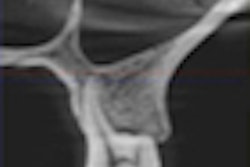While employing a thyroid collar during lateral cephalometric exams does mask some landmarks, the findings of a new study suggest patients should wear them anyway (Dentomaxillofacial Radiology, December 2011, Vol. 40:8, pp. 471-475).
To investigate whether using a thyroid collar during cephalometric radiography hampers the diagnostic and descriptive quality of the images, researchers from Nair Hospital Dental College in Mumbai conducted a randomized observer blinded study comprising two groups that underwent lateral cephalograms -- one group with a thyroid collar and the other without.
The images were taken using the Kodak 9000 system (Carestream), and two observers were appointed to identify 15 sets of landmarks on the lateral cephalograms.
The observers studied 50 lateral cephalograms in each group. Out of the 15 sets of landmarks, 12 were identified consistent with the thyroid collar group. Three landmarks -- the hyoid bone, second cervical vertebra, and third cervical vertebra -- could not be identified on the thyroid collar images.
While thyroid collars do mask some landmarks on lateral cephalograms, "these landmarks are mainly used for analysis of skeletal maturity index (SMI)," the researchers concluded. "It is therefore encouraged to use a thyroid collar during routine cephalometric radiography where SMI information is not needed."
Lead thyroid collars are probably the most convenient and easily available means to protect the thyroid from unwanted radiation, they added.



















